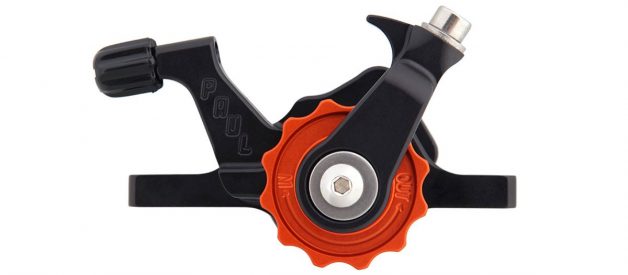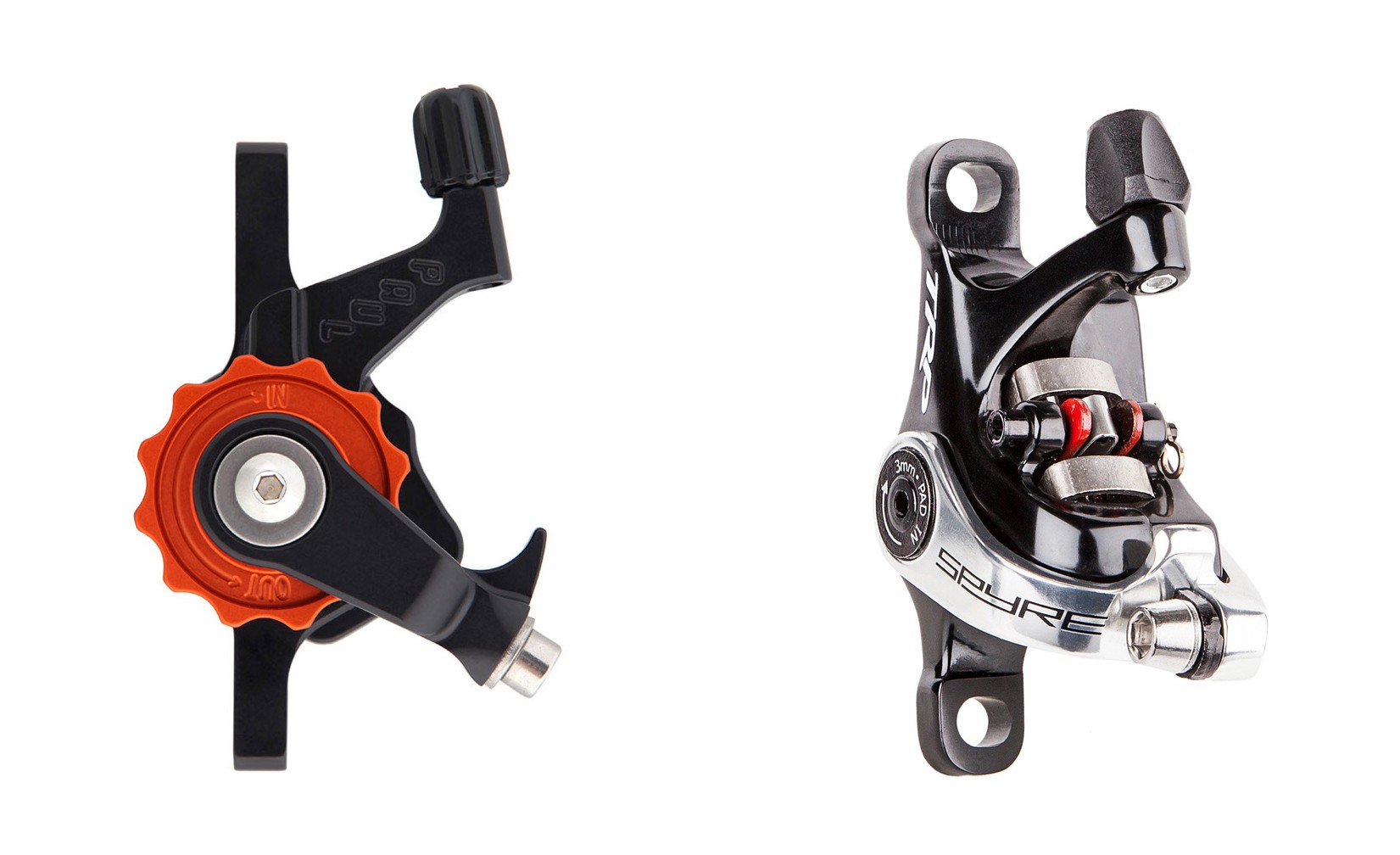
Paul Klamper ($179 /wheel)
By Nick Legan
There is little arguing that disc brakes offer added stopping power and better modulation, especially in adverse conditions. But for adventure and touring cyclists, the ability to adjust or repair a component roadside is paramount. Many hydraulic disc brake systems are extremely reliable, but for increased peace of mind, many of us like a mechanical disc brake. By carrying a spare set of pads and sourcing a brake cable available at any bike shop, a bike can carry its rider far and wide. Mechanical disc brakes offer the added benefit that they are compatible with many types of brake levers, sidestepping almost all compatibility issues. They are also, for the most part, cheaper than hydraulic options. The only downsides to mechanical disc brakes are the necessity to adjust the brake as pads wear (hydraulics do this automatically) and weigh a bit more when compared to the latest hydraulic systems.
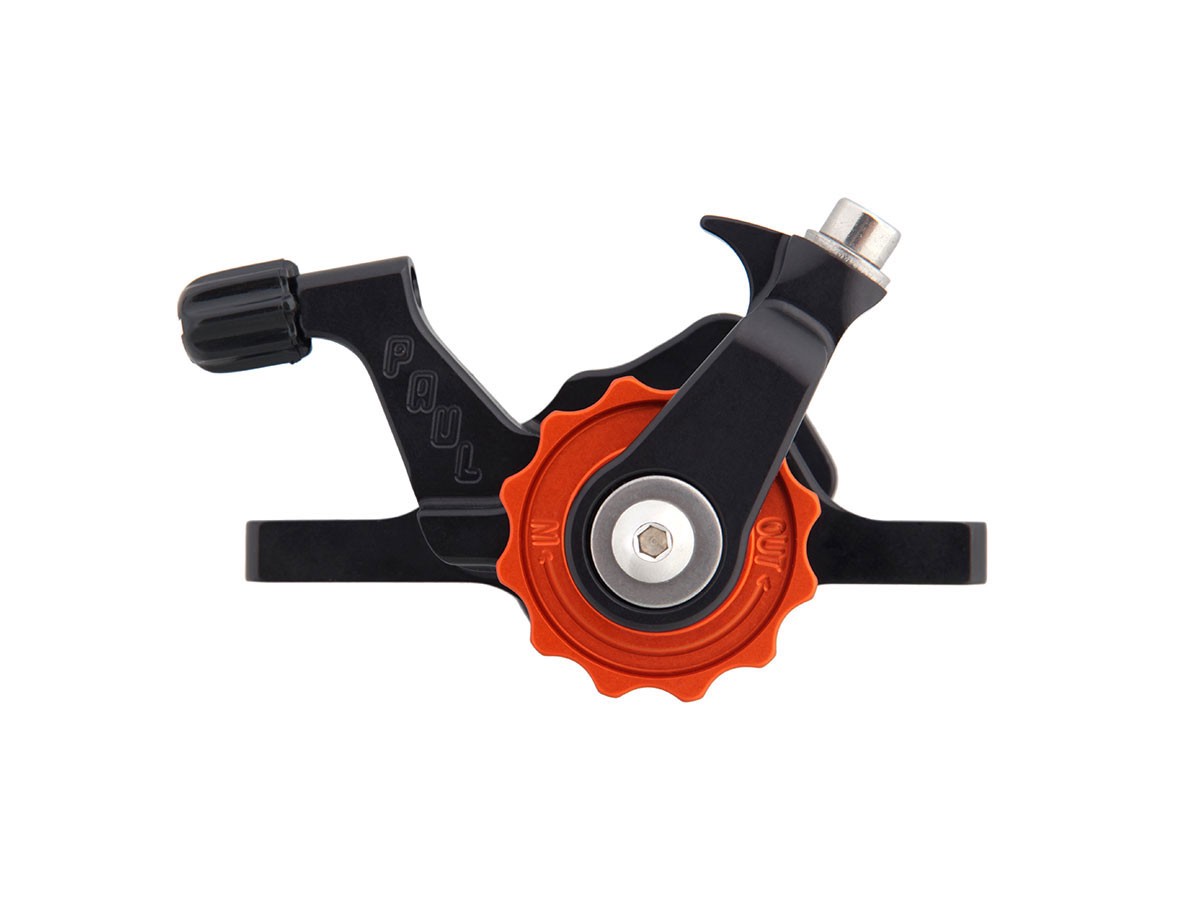 Paul Components Klamper
Paul Components Klamper
The mechanical disc brake standard for well over a decade has been Avid?s venerable BB7 caliper. Easy to set up, reliable and inexpensive, I?ve used BB7s on dozens of bikes with zero problems whether mountain biking, bikepacking, road riding or exploring gravel roads. And while Avid issued a lighter, more attractive version of the BB7 in 2012 with the ti-hardware SL version, the BB7 is long in the tooth. This can lead to wandering eyes and when Paul Components began teasing its new Klamper disc brake, we began foaming at the mouth.
Paul Components is synonymous with high-quality, made-in-America bike parts. In my experience, they are thoughtfully developed, thoroughly tested, and made to very high standards. When we got our grimy hands on a pair to test, I eagerly installed them just days before a gravel race in Oklahoma. The setup was fantastic. These brakes were made with mechanics in mind. They make sense with independent adjustment of both the actuating piston and the fixed piston and a built-in cable adjuster. Paul?s three years of development was obvious.
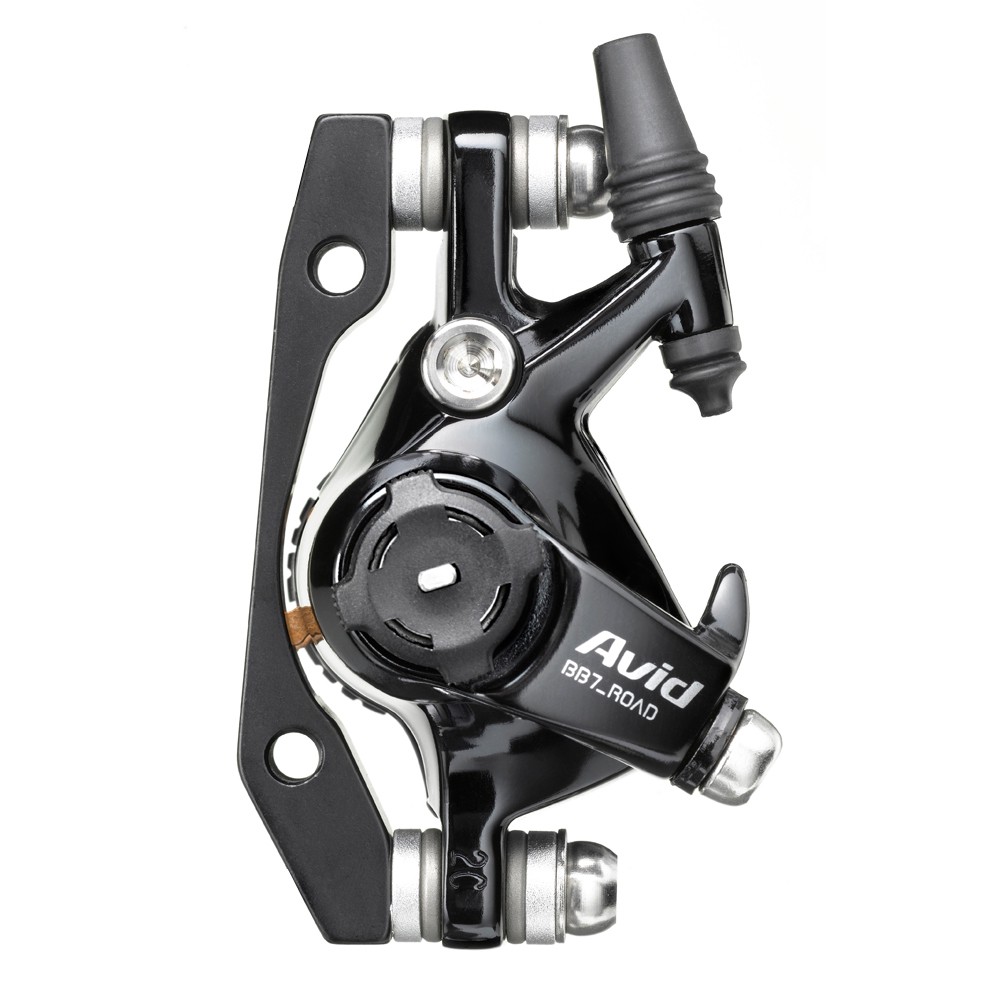 The venerable Avid BB7-Road S
The venerable Avid BB7-Road S
After a couple rides to bed-in the pads, I packed up my bike and drove east for the Land Run 100 in Stillwater, Oklahoma. While gravel races are rarely won in the corners, braking is always important, especially in slick conditions. The Land Run has a reputation for destroying bikes with its red clay mud. This year was no exception. Rain fell the night before the race and on the start line a foggy mist enveloped the riders. The first 25 miles of the course had numerous hike-a-bikes through deep mud. With varying amounts of moisture, the mud changed from wet spray to thick peanut butter. Through it all, the Klampers worked a treat. I ran small 140-millimeter rotors and had all the stopping power I needed. Modulation was great and despite being lacquered with mud, the Klampers? action remained smooth over the course of my eight-hour day.
Paul?s Klampers use Avid Elixir-style brake pads, a good thing as they?re readily available. Unlike the BB7 pads, these clear Shimano rotors easily and give you the option to run virtually any brand rotor.
It?s not often that adding weight to your bike would be considered an upgrade, but the svelte look, fantastic lever feel and wonderful adjustability of Paul?s Klamper brakes does just that. And the weight added is minor. At 220 grams for the caliper, pads, and mounting bolts, the Klampers are 15 grams per wheel heavier than Avid BB7 brakes.
At $179 per wheel, Paul?s Klampers are not cheap. But the quality is typical for Paul Components and I expect they?ll last for many decades to come. To compare, Avid?s BB7 brakes retail for $69 per wheel and come with a rotor. The lighter BB7 SL brakes go for $170.
One nice feature on the Klampers is that you can change the pull ratio from short to long or vice versa by purchasing different actuator arms from Paul for $30 per brake. This helps to keep the brakes relevant if you ever sell a bike or decide to use a flat bar instead of a drop bar. The brakes are sold with either arm as an option.
In the end, I think much of the value proposition that Paul Components is extending has to do with a refined feel, top quality and an American made product. They are unapologetic about the price and based on the performance, no apology is required.
TRP Spyre ($90/wheel)
By Alex Strickland
For years, I dug in my heels against the clear turning of the tide toward hydraulic disc brakes in the mountain bike world. Sure, they might stop better, have more modulation, and be (mostly) maintenance free. ?But what if a line gets kicked off?? I whined. ?Won?t they need bleeding all the time?? I wondered. ?Why do they cost so much?? I moaned. Having now run hydros on mountain bikes for years these concerns have all been allayed (though I still have no idea how to bleed a brake line myself), but when it came time to build up a new touring bike this year I felt the old questions and my own mechanical ineptitude nagging.
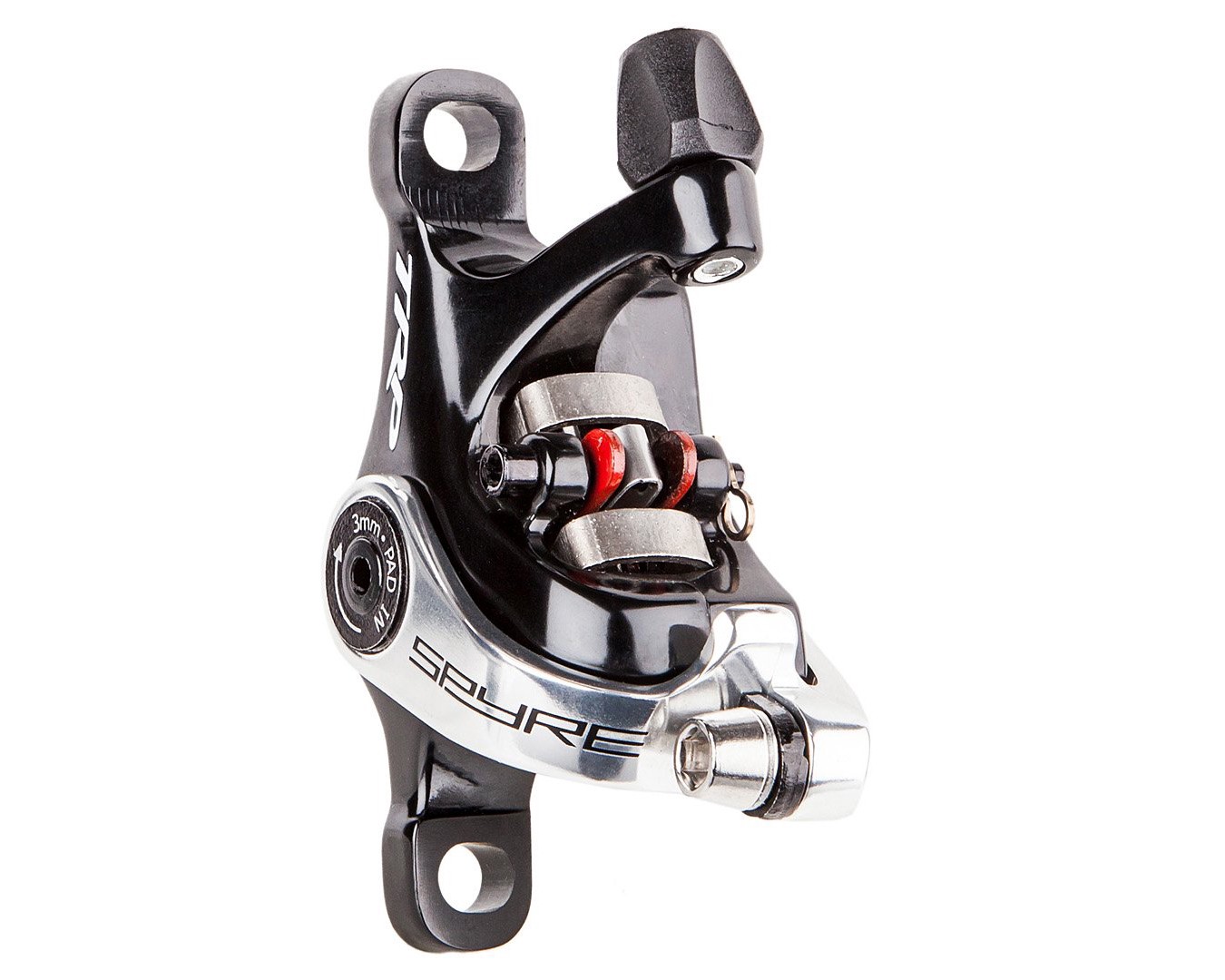 TRP Spyre
TRP Spyre
Though I?ve ridden Avid?s cable-driven BB5 and BB7 model for many years on many types of bikes, I?d read glowing reviews of TRP?s Spyre mechanical disc brakes, which unlike the Avids or the Pauls, actuate the pads on both side of the rotor ? like a hydraulic brake. At $90 a wheel, the price wasn?t bad and assuming they had enough clearance for the mountain bike 29er wheels I was planning to use for the build (see Patrick O?Grady?s April 2015 Road Test of the Novara Mazama, which cut it very close with a set of Spyres), they seemed like the perfect middle road between the mechanicals of old and the hydros of the future.
Out of the box, the build quality was top notch and the horseshoe design that allows the arm to pull both sides at once is a forehead-slapping layout once it?s sitting in front of you. Someone should?ve thought of this a while ago. Install on my Soma Wolverine was straightforward and I had no problem centering the older Avid rotors that were already on the secondhand wheels, though TRP included rotors of their own should the mood strike me to swap them out. Stopping was courtesy of SRAM?s Apex integrated shifter levers.
Again, I?ve spent a lot of time riding mechanical disc brakes and so I felt like my expectations were reasonable as far as performance compared to both rim brakes and high-end hydraulics. I was not, however, prepared for how good these brakes felt. The power was on par with hydraulics and the modulation was nearly as good ? none of the mushy feel that sometimes accompanies mechanical discs. Barrel adjusters on the caliper bodies made fine-tuning the engagement point easy and the considerable consistent power was more than enough to haul down a lightly loaded bike at a good clip.
I?ve been commuting full-time on the Soma for a few months now and my feeling about the Spyres hasn?t changed since the first shakedown ride? they are simply the best mechanical disc brakes I?ve ever used. It?s a pretty thin market ? after discarding some extremely low-end options I?ve ridden over the years from Hayes and Tektro, you?re really just left with the offerings from Avid and Paul. I haven?t hopped on the Klampers, but the Spyres have so far been more powerful and provided better feel than any set of BB7s I?ve experienced, and for a comparable price. The Pauls are undeniably beautiful and American made, but they don?t come cheap.
My gripes have less to do with the Spyres themselves than mechanical brakes at large. As pads wear and new cables stretch, the engagement point changes unless you take up the slack, whereas hydros automatically adjust. Spoke clearance was adequate and with a bit of finagling I was able to route fender mounts around the Spyre?s sizeable calipers. Pad wear has been good so far, though the bike hasn?t seen much more than commuting duty, so I can?t speak for longevity when hauling 50 lbs. of packed panniers to a stop on a regular basis.
With hydraulic discs taking over the consumer road-bike market and already the undisputed spec of choice on mountain bikes, their ascendancy may be inevitable. But if the TRP Spyres are cable-actuated disc brakes? swan song, they?re a darn good one.
